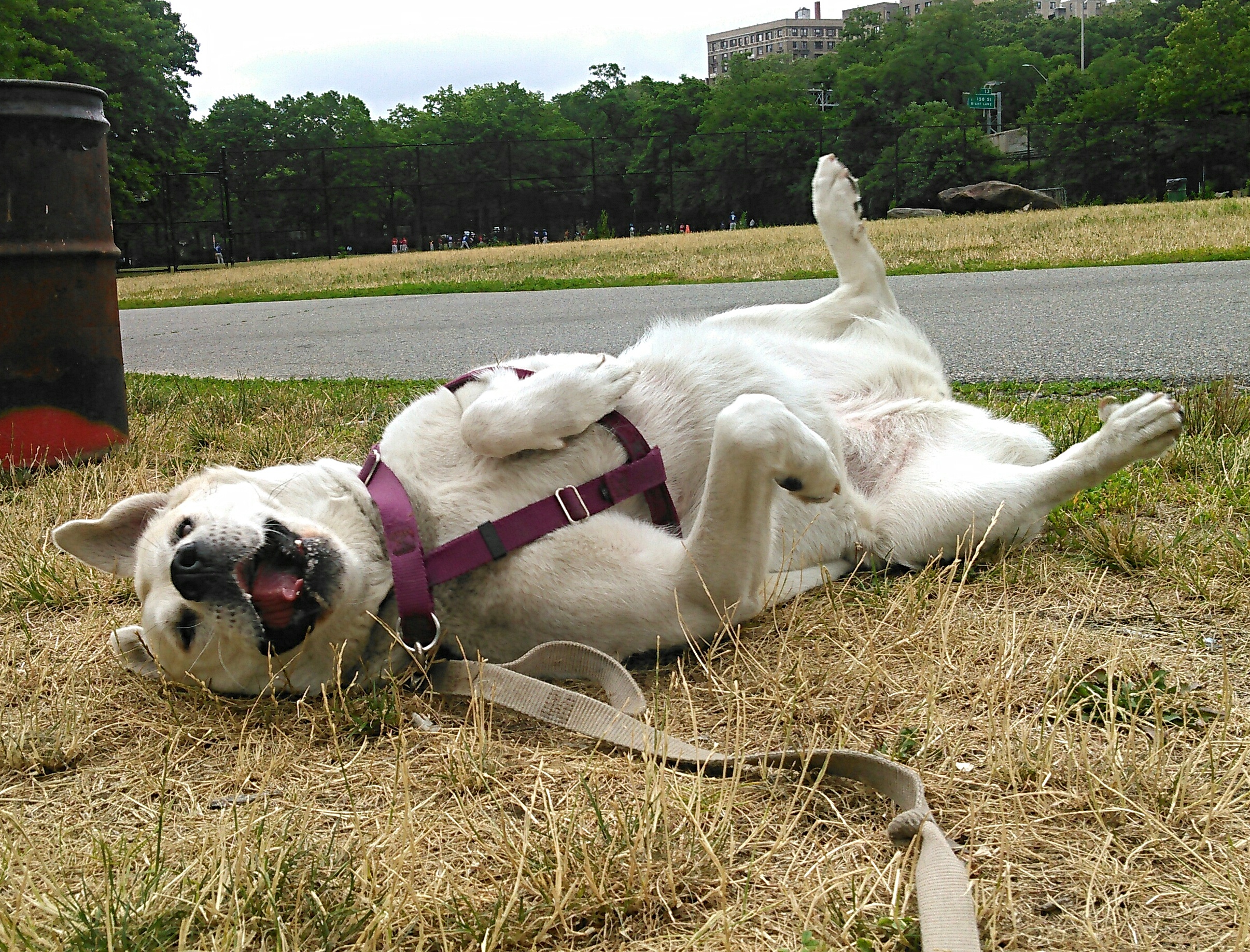
11 Aug House Training 101: What You Need To Know
Any new parent can tell you the joys and woes of having a fresh family member. Whether or not that member is a puppy or older dog, there are always adjustments that need to be made. For a learning puppy, or an adopted adult, getting used to a new space involves a lot of gentle introductions, comfort, and of course patience. Especially when it comes to the question: Where do I go to the bathroom? Here’s how we can positively introduce our new pups to house training!
When Does A Pup Need to Go
Everybody goes. It’s part of what makes us living, breathing, happy creatures. The trick to helping your pup know when and where you want them to go is understanding how all the… mechanics work. And there’s a lot of mechanics involved with time.
It’s important that we clock certain activities our dog does. This can help us see a pattern and form an understanding of a dog’s personality and personal schedule.
Here’s what you should know: When a dog wakes up, chances are she needs to relieve some built up stuff. The same idea should be applied to eating and drinking, exercise, and playtime! Once the activity is done, there’s a window of about 5-15 minutes, give or take, before it’s potty time. That’s why it’s important to look for the signs that will let you know when your pal needs a pail.
Give Us A Sign
It can be difficult to tell when a puppy needs to go, but there are a few tells common to most puppies. Often, a puppy will wander away from the spot they are in search for a good place to ‘go.’ You’ll also want to keep an eye out for sniffing, circling, or pawing at one spot. Also keep in mind the Time Line we talked about above. If your pup has been eating, drinking, playing or sleeping they’ll need to ‘go’ within a few minutes of doing so – especially if they’re puppies.
Schedule
Canines thrive on predictability, and having a schedule is essential to helping a pup learn when and where to go. A good place to start is with your own schedule – when do you usually get up, leave for work, want down time, etc. Now, think about your pups needs: A puppy will need to go out (or to their wee pad) every few hours at first. For a general idea, count how many months old the pup is, and add 1. For example, an 8 week old puppy will need to go about every 3 hours, although most pups can go for longer if they’re sleeping, i.e. through the night. For older dogs who are just starting house training every 3 hours is a good place to start. Then, we gradually increase the amount of time as your pup learns and proves that she can hold it longer!
You can use the signals your pup gives you, along with the advice above to create a predictable and healthy Potty Regimen! Combine your schedule and your dogs, and begin planning your trips outside. If needed enlist help, whether professional or from friends and family. This will help ensure that your pup is getting the opportunities they need to do what we want them to so we can let them know how much we appreciate it.
Home Within Home
Space is an important thing to keep in mind. Most dogs have a natural instinct to not soil where they sleep. Although, keep in mind your pup’s unique situation: some pups who’ve begun their life in circumstances where they routinely went where they played or slept (like a pet store) will often lose this instinct and need a little extra help when it comes to house training. In general, a pup needs enough space to stand up, turn around, and lay down. Any more, and many pups will feel they have enough space to eliminate on one side of their crate or pen and snooze away on the other.
Crate training can be a great way to manage how much space your pup has access to, and when they have it. When using a crate or confining space (like a gated off area), we need to make sure our pups have plenty of time outside that space for lots of mental and physical exercise. Plan to thoroughly exercise your pup, physically and mentally before confining your pup. It will also help to take the proper steps to introduce your pup to their crate, pairing it with positive things like food stuffed toys and starting with very short stays in the crate.
Do’s and Don’t’s
When taking your pup out, carry or quickly walk them to the location it’s safe for them to go, and wait. Quietly give a go potty cue, such as ‘get busy’ or ‘go potty.’ Don’t say or do anything else, and wait for at least 5 minutes. If nothing happens, head back inside and confine your pup for about 15 minutes before trying again. This will help your pup learn to go right away when they get outside, which will come in very handy for those rainy/freezing/I’m late for work days when you need them to go right away.
One of the most important things to do with house training is to reinforce your pup for “going” when and where you would like them to. Make a big deal out of every time your pup goes in the right spot – treats, praise, adventure (ie, go for a long walk)!
Try to avoid going straight back inside after your pup eliminates. For many outside loving pups this gives them the impression that their going causes bad things to happen (they have to go inside), so they delay potty time as long as possible.
Above all, avoid any form of punishment while house training. Reprimanding a pup for going when or where you don’t want them to is most likely to teach them not to go in front of you. This makes it very difficult to teach them you do actually want them to do that…just in certain locations.
Lastly, pay attention to when you deliver your rewards. Dogs learn by association, and in order to learn, the consequences of their actions must be immediate. For example, if your pup goes in the right place at the right time, your rewards must come immediately – within a couple of seconds (at most) in order for them to connect their action with the good stuff. That means if you arrive home to find your pup has successfully eliminated on their wee pad while you were gone, any treats or praise is going to be associated with your arrival at home, not their potty habits. You can check out the blog post on timely rewards here!
Adjustments Are Normal While House Training!
We aren’t all perfect. Accidents happen, so we have to be willing to give a little leeway when they do.
First, if you find a little surprise in a “No Go” zone, make sure you have an enzymatic cleaner. These help wash away smells and stains only our pups pick up on, curbing any future accidents in that spot. From there, we have to keep in mind how our dogs learn. In avoiding punishment, we have to remain calm and collected. So, if you walk in on your dog about to go, don’t panic. Just gently scoop her up, take her to the potty pad or outside, and then praise her for going there! If she is mid-stream, patiently wait it out. If you react suddenly or in a panic, you’re sending signals that may scare or confuse your dog. That wont help in house training. And of course, if you find an accident hidden away, don’t try to teach a lesson. Use your cleaner, and keep your eye out for positive opportunities!
What we need to do when properly house training is keep it positive, calm, and consistent! Building a schedule is only one piece of the puzzle, and like other training we need to create a safe and comfortable atmosphere that nurtures learning. If we’re patient and willing to adjust a little here and there, we’re on the right track to a positive potty training experience!




No Comments